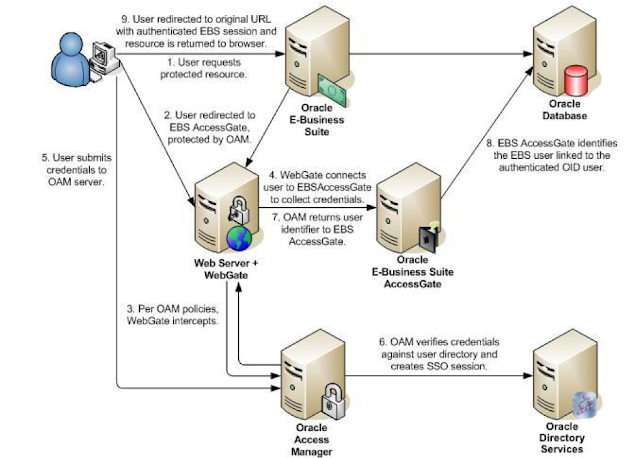How to map semaphores id in unix to Oracle process:
eg: ps -ef | grep pmon | grep -v grep
oracle 23398 1 0 2011 ? 00:06:05 ora_pmon_DB1
oracle 24488 1 0 Jan10 ? 00:01:51 ora_pmon_DB2
oracle 31682 1 0 Jan23 ? 00:00:23 ora_pmon_DB3
ipcs -map
------ Shared Memory Creator/Last-op --------
shmid owner cpid lpid
80642052 oracle 31653 32595
79790085 oracle 23371 29972 - marked in trace file
80510982 oracle 24226 30222
Now each shmid is mapped with each database. now we need to find out which shmid belongs to which database
1. Login to DB1
2. sqlplus ' /as sysdba'
SQL> oradebug setmypid
Statement processed.
SQL> oradebug ipc
Information written to trace file.
3. got to dump file location and open lastly generated trace file
Dump file /oracle/admin/DB1/udump/db1_ora_15433.trc
Oracle Database 10g Enterprise Edition Release 10.2.0.5.0 - 64bit Production
With the Partitioning, Real Application Clusters, Oracle Label Security, OLAP,
Data Mining Scoring Engine and Real Application Testing options
ORACLE_HOME = /oracle/product/10.2.0.5/DB1
System name: Linux
Node name: db1-linux
Release: 2.6.18-238.9.1.el5
Version: #1 SMP Fri Mar 18 12:42:39 EDT 2011
Machine: x86_64
Instance name: DB1
Redo thread mounted by this instance: 1
Oracle process number: 33
Unix process pid: 15433, image: oracle@db1-linux (TNS V1-V3)
*** 2012-01-24 12:51:31.038
*** ACTION NAME:() 2012-01-24 12:51:31.038
*** MODULE NAME:(sqlplus@ldb1-linux (TNS V1-V3)) 2012-01-24 12:51:31.038
*** SERVICE NAME:(SYS$USERS) 2012-01-24 12:51:31.038
*** SESSION ID:(2769.41080) 2012-01-24 12:51:31.038
Dump of unix-generic skgm context
areaflags 000000e7
realmflags 0000000f
mapsize 00000800
protectsize 00001000
lcmsize 00001000
seglen 00200000
largestsize 0000001f7d2fb800
smallestsize 0000000001000000
stacklimit 0x7fffd5de24c0
stackdir -1
mode 640
magic acc01ade
Handle: 0x1965f470 `/oracle/product/10.2.0.5/DB1'
Dump of unix-generic realm handle `/oracle/product/10.2.0.5/DB1', flags = 00000000
Area #0 `Fixed Size' containing Subareas 0-0
Total size 0000000000209ab8 Minimum Subarea size 00000000
Area Subarea Shmid Stable Addr Actual Addr
0 0 79790085 0x00000060000000 0x00000060000000
Subarea size Segment size
000000000020a000 0000000540200000
Area #1 `Variable Size' containing Subareas 2-2
Cleanup the process using ipcrm command:
ipcrm -m 79790085
eg: ps -ef | grep pmon | grep -v grep
oracle 23398 1 0 2011 ? 00:06:05 ora_pmon_DB1
oracle 24488 1 0 Jan10 ? 00:01:51 ora_pmon_DB2
oracle 31682 1 0 Jan23 ? 00:00:23 ora_pmon_DB3
ipcs -map
------ Shared Memory Creator/Last-op --------
shmid owner cpid lpid
80642052 oracle 31653 32595
79790085 oracle 23371 29972 - marked in trace file
80510982 oracle 24226 30222
Now each shmid is mapped with each database. now we need to find out which shmid belongs to which database
1. Login to DB1
2. sqlplus ' /as sysdba'
SQL> oradebug setmypid
Statement processed.
SQL> oradebug ipc
Information written to trace file.
3. got to dump file location and open lastly generated trace file
Dump file /oracle/admin/DB1/udump/db1_ora_15433.trc
Oracle Database 10g Enterprise Edition Release 10.2.0.5.0 - 64bit Production
With the Partitioning, Real Application Clusters, Oracle Label Security, OLAP,
Data Mining Scoring Engine and Real Application Testing options
ORACLE_HOME = /oracle/product/10.2.0.5/DB1
System name: Linux
Node name: db1-linux
Release: 2.6.18-238.9.1.el5
Version: #1 SMP Fri Mar 18 12:42:39 EDT 2011
Machine: x86_64
Instance name: DB1
Redo thread mounted by this instance: 1
Oracle process number: 33
Unix process pid: 15433, image: oracle@db1-linux (TNS V1-V3)
*** 2012-01-24 12:51:31.038
*** ACTION NAME:() 2012-01-24 12:51:31.038
*** MODULE NAME:(sqlplus@ldb1-linux (TNS V1-V3)) 2012-01-24 12:51:31.038
*** SERVICE NAME:(SYS$USERS) 2012-01-24 12:51:31.038
*** SESSION ID:(2769.41080) 2012-01-24 12:51:31.038
Dump of unix-generic skgm context
areaflags 000000e7
realmflags 0000000f
mapsize 00000800
protectsize 00001000
lcmsize 00001000
seglen 00200000
largestsize 0000001f7d2fb800
smallestsize 0000000001000000
stacklimit 0x7fffd5de24c0
stackdir -1
mode 640
magic acc01ade
Handle: 0x1965f470 `/oracle/product/10.2.0.5/DB1'
Dump of unix-generic realm handle `/oracle/product/10.2.0.5/DB1', flags = 00000000
Area #0 `Fixed Size' containing Subareas 0-0
Total size 0000000000209ab8 Minimum Subarea size 00000000
Area Subarea Shmid Stable Addr Actual Addr
0 0 79790085 0x00000060000000 0x00000060000000
Subarea size Segment size
000000000020a000 0000000540200000
Area #1 `Variable Size' containing Subareas 2-2
4. You can map this id to id you got in above output in ipcs
Cleanup the process using ipcrm command:
ipcrm -m 79790085

